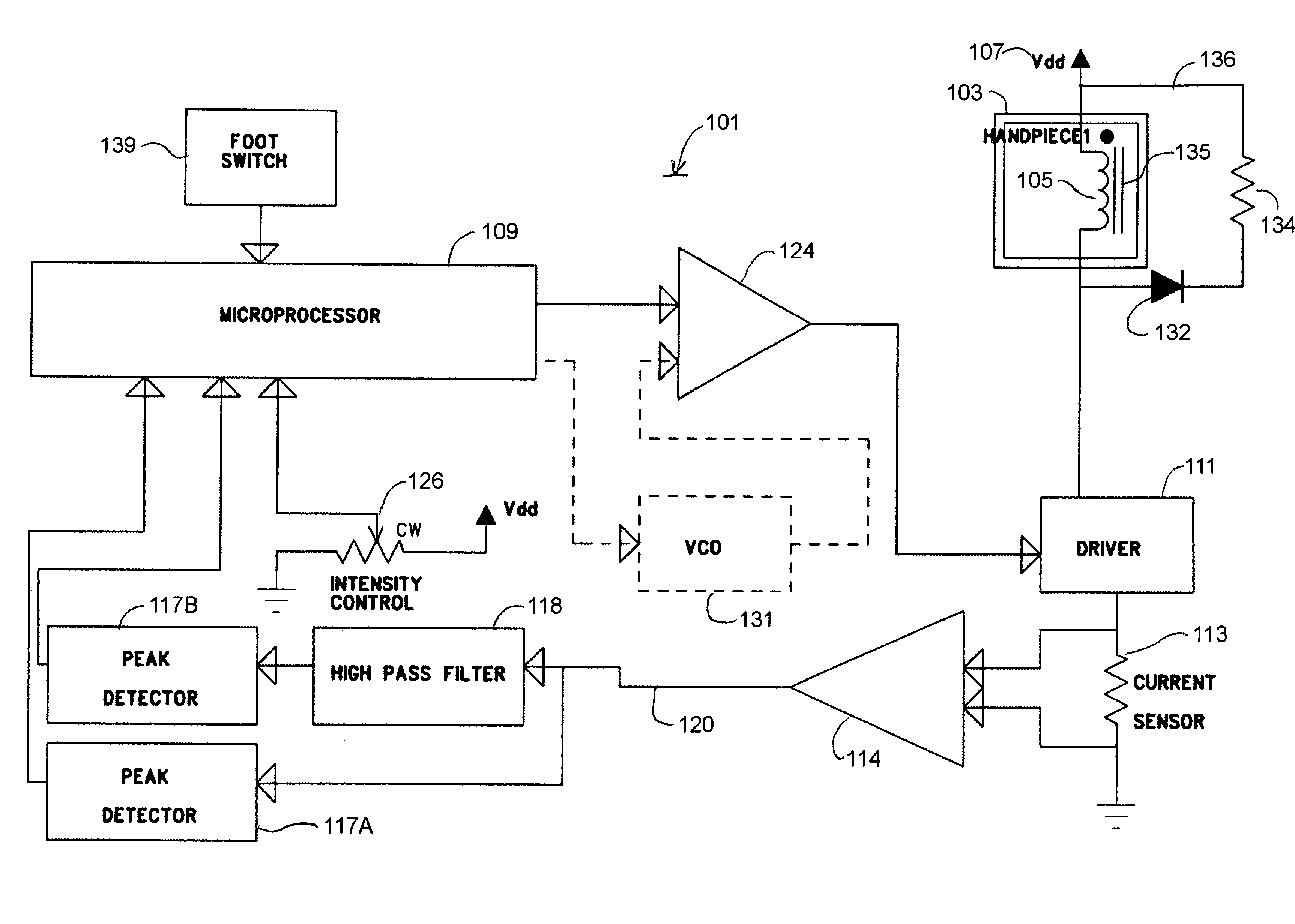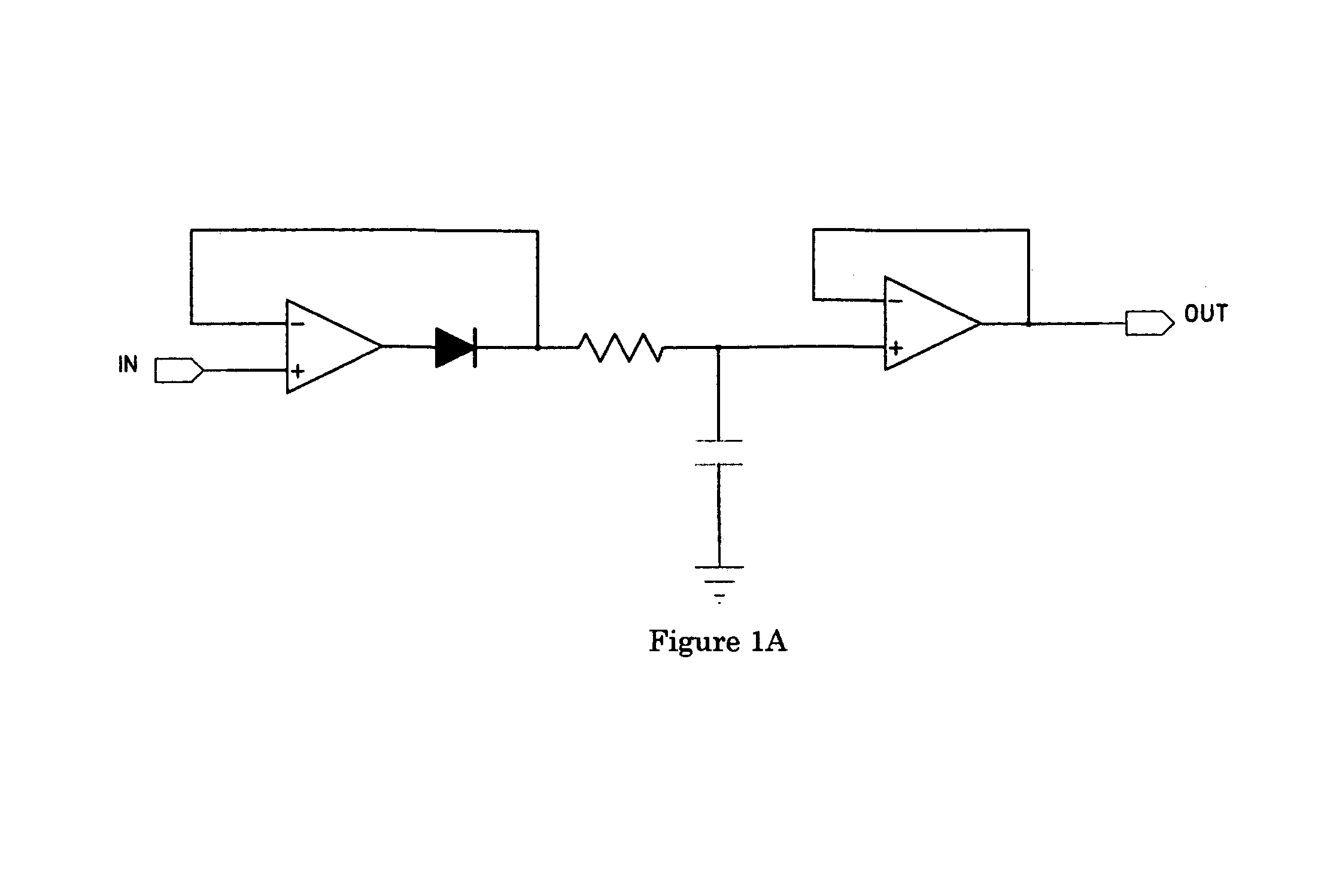Apparatus and method for controlling excitation frequency of magnetostrictive ultrasonic device
a technology of ultrasonic transducers and ultrasonic devices, which is applied in the field of ultrasonic transducers, can solve the problems of incompatible controllers, inductors, transformers, amplifiers, idemoto's controllers, etc., and achieves simple and inexpensive circuitry and components, simple and inexpensive components, and the effect of maximizing the power transferred to the working inser
- Summary
- Abstract
- Description
- Claims
- Application Information
AI Technical Summary
Benefits of technology
Problems solved by technology
Method used
Image
Examples
Embodiment Construction
[0039]The principles and operation of a controller for magnetostrictive ultrasonic dental devices according to the present invention may be understood with reference to the drawings and the accompanying description.
[0040]FIG. 1 is a conceptual block diagram of a magnetostrictive dental scaler system according to an embodiment of the present invention. A controller 101 controls the current through an excitation coil 105 in a separate handpiece 103. A magnetostrictive insert 135 is placed within handpiece 103 within excitation coil 105. (Insert 135 is shown schematically in FIG. 1. In practice, insert 135 is placed physically within the confines of excitation coil 105, such that the tip of insert 135 is exposed and available for cleaning the surfaces of the patient's teeth).
[0041]Coil 105 is connected, in series with a driver 111 and a current sensor 113, between a voltage source 107, and the other end of coil 105 connects to a return path (e.g. ground) 108. Driver 111 is generally co...
PUM
 Login to View More
Login to View More Abstract
Description
Claims
Application Information
 Login to View More
Login to View More - R&D
- Intellectual Property
- Life Sciences
- Materials
- Tech Scout
- Unparalleled Data Quality
- Higher Quality Content
- 60% Fewer Hallucinations
Browse by: Latest US Patents, China's latest patents, Technical Efficacy Thesaurus, Application Domain, Technology Topic, Popular Technical Reports.
© 2025 PatSnap. All rights reserved.Legal|Privacy policy|Modern Slavery Act Transparency Statement|Sitemap|About US| Contact US: help@patsnap.com



